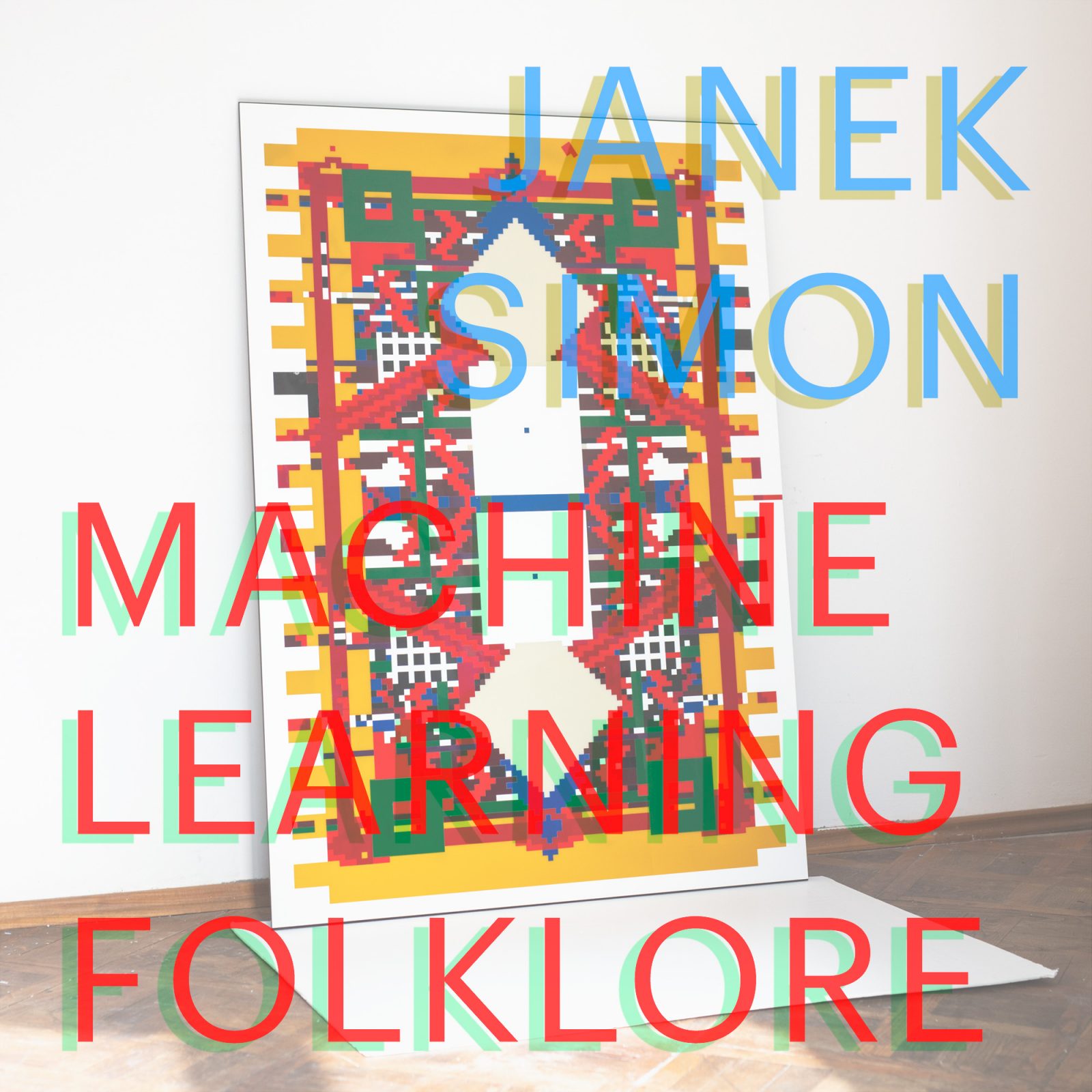
The latest exhibition by Janek Simon at Raster has an open structure. Instead of a traditional, arranged showing of completed artistic objects, we are given a process, a situation suggesting a visit to the studio, where we can observe “live” the changing progress of work on each project. The artist is present, and the situation in the gallery changes from each day to the next. This approach is an attempt to find a more appropriate form of communication with viewers in the post-epidemic reality—a form extended in time and focused on dialogue. But it also arises naturally out of the peculiarities of Simon’s artistic and quasi-artistic practices, in which the adopted method of proceeding and the activity itself always take precedence over the more-or-less permanent, material result. The theme around which each of the initiatives centres is the new set of works from the Synthetic Folklore series.
In his unique practice as a traveller, thinker, anarchist and artist, Simon persistently tests the possibilities of artificial intelligence. His quest is not aimed at resolving a specific issue but to the contrary, often aims at heightening complications. Working with contemporary algorithms, Simon continues to pursue what was the domain of art in the age of modernism: to expand the fields of experimentation and freedom.
The main subject of his interest is issues of post-global and post-colonial identity interwoven into everyday economic, political and cultural dilemmas. In the works from the Synthetic Folklore series, Simon uses an algorithm he developed drawing on hundreds of traditional patterns of fabrics and carpets to generate entirely new compositions. The latest works from this cycle offer the paradoxical effect of depth achieved through superimposing numerous layers of flat patterns. The multicoloured horror vacui of these mosaics cut from acrylic discs simulates the dynamic of ever-accelerating cultural processes, the radical congestion and interpenetration of various codes ultimately generating the illusion of opening up new spaces. This perspective is ambivalent, offering no stable conclusions. It is rather a contemporary, global vortex.
Simon employs his machine-learning practice further in a new series of sculptures which are to be created during the course of the presentation at Raster. He thus radicalizes his approach, turning over to the algorithm the right of creation of three-dimensional objects. Here artificial intelligence generates shapes of a new, universal folklore. It is hard to resist the impression that this occurs through the principle of self-fulfilling prophecy.
Janek Simon (born 1977) is one of the most original artists of his generation. His works reflect on the changing economy and culture in the era of globalization. The objects and installations he creates often include an experimental and anarchist dimension, illustrating the collision between scientific theories and everyday reality. The retrospective of his works entitled Synthetic Folklore (curated by Joanna Warsza) was the highlight of the past year at Warsaw’s Ujazdowski Castle Centre for Contemporary Art. The upcoming exhibition at Raster coincides with the release of the first monograph book on the artist (published by Ujazdowski Castle Centre for Contemporary Art and Sternberg Press), which we also recommend.













